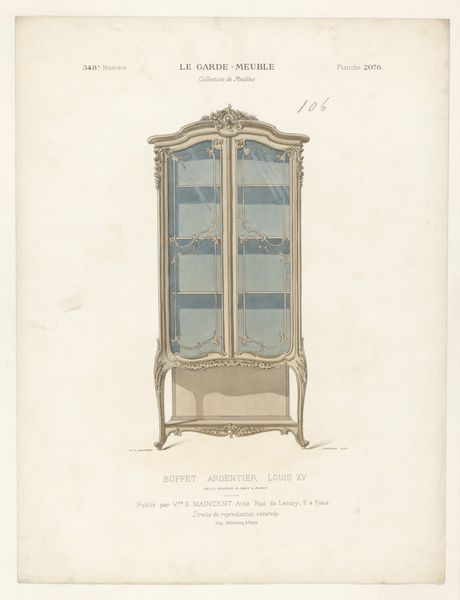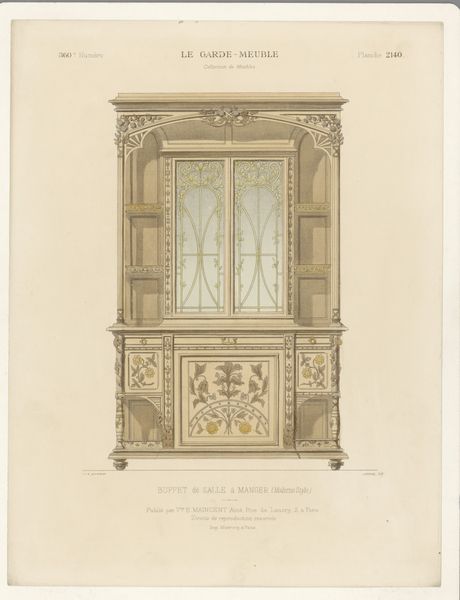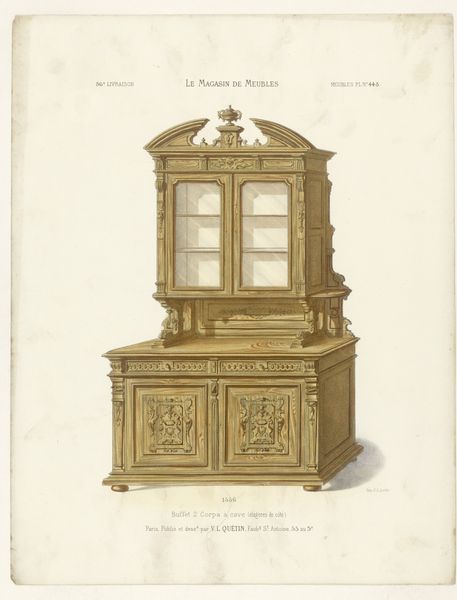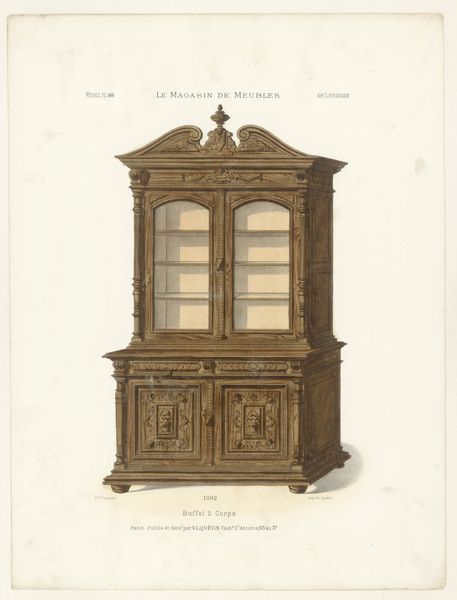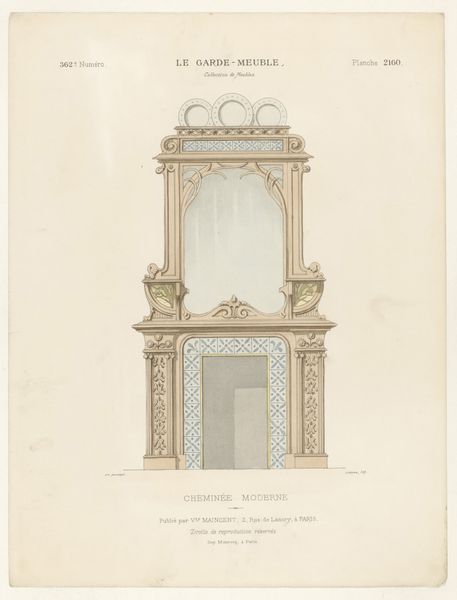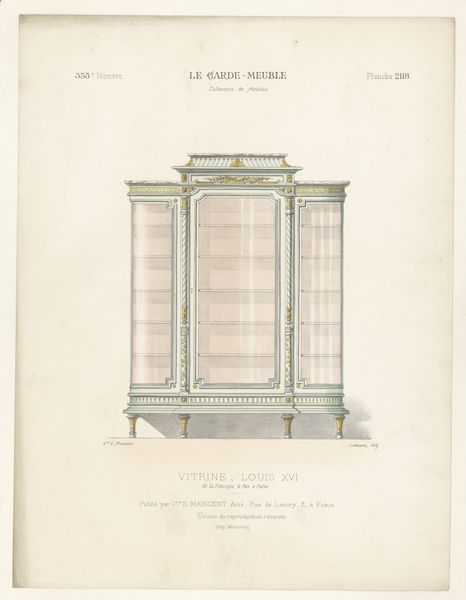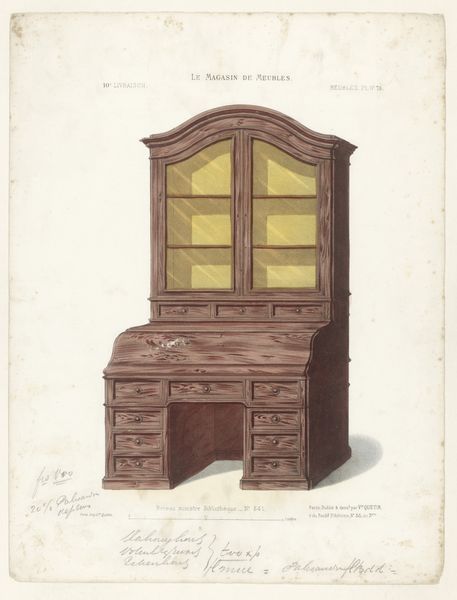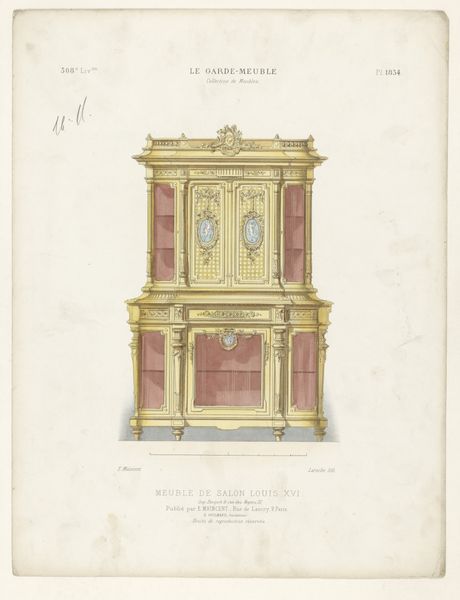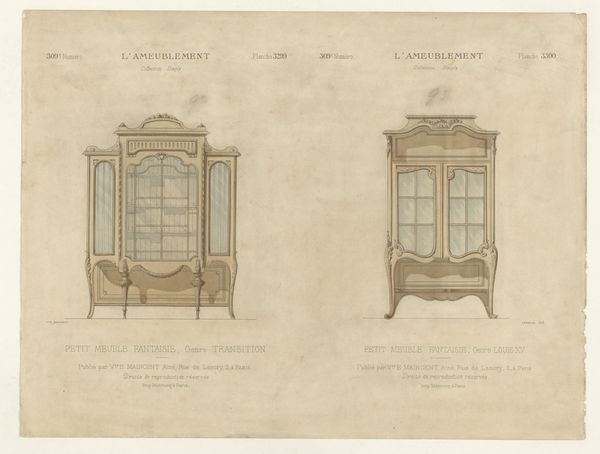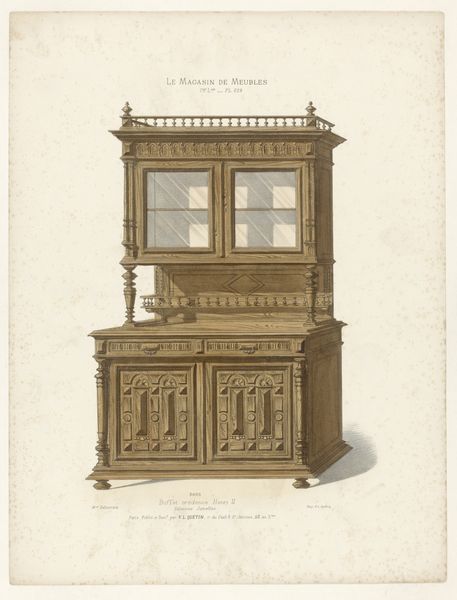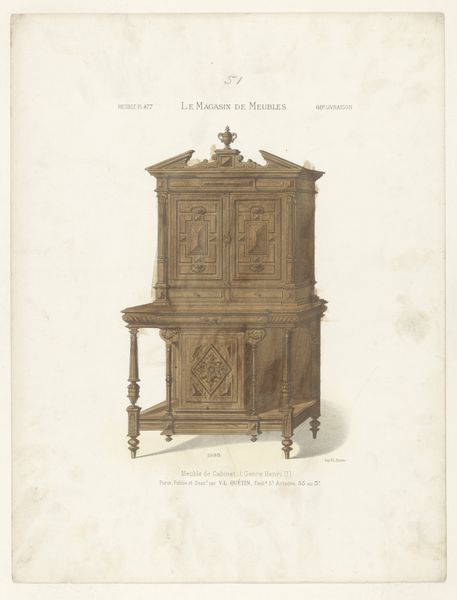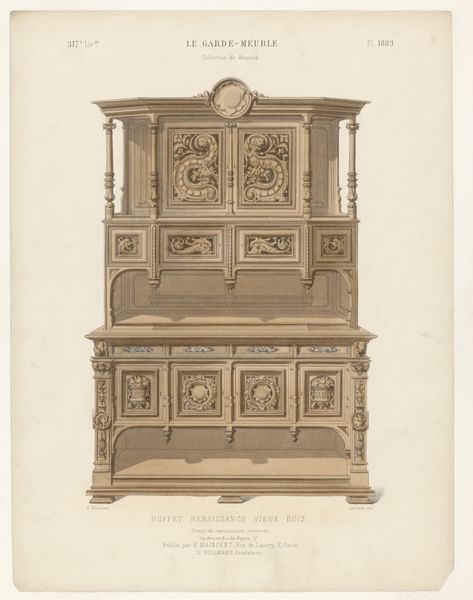
Dimensions: height 359 mm, width 274 mm
Copyright: Rijks Museum: Open Domain
Curator: This print, “Buffetkast,” likely made between 1895 and 1935 by Léon Laroche, depicts a sideboard. The detailed engraving suggests a reverence for form, echoing Neoclassical ideals. What do you observe? Editor: It's interesting how the drawing really highlights the sideboard, and its clean lines almost make it feel like a photograph. It’s presented quite plainly – like a product shot. Why do you think this piece was made? Curator: Consider the social and economic context. Furniture design at the turn of the century became enmeshed in mass production and consumption. Prints like this served a very specific function. It was a visual marketing tool. Reflect on the engraver's labor in crafting this idealized representation, connecting skilled work with consumption desires. What statement is being made about luxury? Editor: I see what you mean! It’s like it's blurring the line between fine art and functional design. So this image is less about art and more about advertising the physical piece? Curator: Exactly. By understanding how it was created and used, we can examine the interplay between art, craft, and consumerism, which is fundamental in materialist analyses. What are your thoughts now? Editor: It's shifted my perspective completely. At first, I saw just a picture of a sideboard, but it is a depiction of how consumer culture and material wealth are displayed. I didn’t realize I needed to examine it as part of an economic process, not simply an aesthetic object. Curator: Indeed. Understanding art as connected to material culture and consumption can change the way we view and appreciate artworks, even those seemingly simple like this one.
Comments
No comments
Be the first to comment and join the conversation on the ultimate creative platform.

